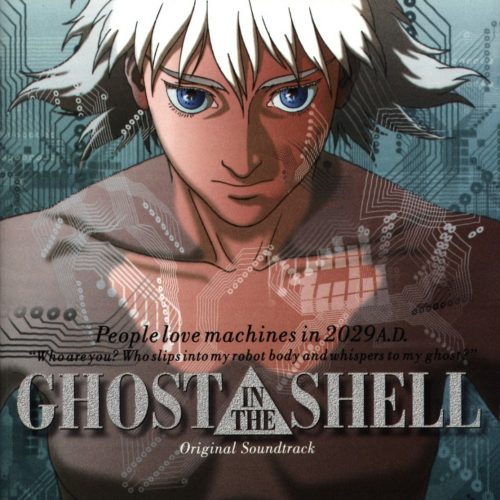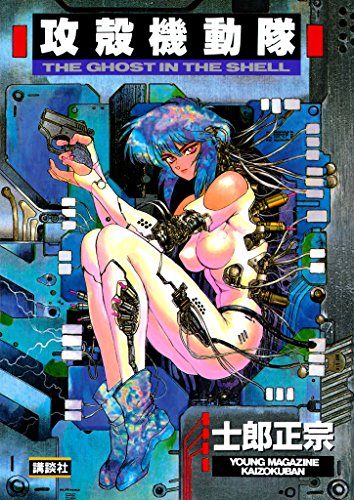

For the past 30 years, Masamune Shirow’s Ghost in the Shell series has been a multi-media sensation and is confirmed to get a new Netflix exclusive series in 2020. However, there is no doubt that the original 1995 movie can definitely be considered ahead of its time upon its debut, which is why it’s still considered a classic. Back then, the internet was in its infancy and it appropriately centered around cyber terrorism, and corruption. Here we are just 25 years later, and with the internet necessary for our society to function on just about every level you can think of, the threat can have disastrous consequences and with the Edward Snowden fiasco, we can see how the government can abuse such technology on its citizens. Not only does it explore the political and societal side of things, but how such technology can affect the individual as well. Other than that, how does the original manga and its anime counterparts measure up? Let’s explore that with this edition to Anime Vs. Manga.
Basis of the Plot
For both the 1995 movie and the original manga, the basis of both stories are more or less the same. They largely revolve around how an advance AI known as the Puppet Master is wreaking havoc and Section 9 has to stop it. Other than following the same plot and using the same characters, the execution largely differs. Though they both focus on the Puppet Master, the manga has a lot of filler content and branches out in the way Stand Alone Complex does with its respective series by having episodic chapters, and other chapters focused on finding the Puppet Master. As previously stated, Stand Alone Complex, in terms of pace, does take from the manga. As opposed to having the Puppet Master as the antagonist, we have the Laughing Man, an original character based on an actual incident with the kidnapping of a company president in Japan back in the 1980s. Later on, we learn that he’s actually one of the good guys and like in pretty much all versions, the true villains are corrupt politicians and big business who collaborate with them.
The Atmosphere
Ghost in the Shell in all of its incarnations share a great balance of style and substance with its exciting action sequences, and its relatable philosophical explorations as to what defines existence, and what it means to be human. In a world where people can now find a sense of immortality by becoming machines, you see the benefits and the risks. But if there is one thing that the manga does to distinguish itself, it uses a lot more humor. As for the 1995 movie, the humor is non-existent and the humor comes across as rather casual in Stand Alone Complex from time-to-time. However, the supporting cast in all versions are all the same characters and serve the same roles, but they tend to carry more humor in the manga and even sing a song about how much they love the Major.
Use of Colors
The difference in tone can also be contrasted in how colors are used. In the manga and Stand Alone Complex, you get a lot of blue, purple, and white as part of the color scheme, but the 1995 movie takes a different approach by mostly portraying a gray and black world, you feel a sense of urban decay, but the manga and Stand Alone Complex give you a cleaner and brighter world. The Major’s design in the manga and the movie are significantly different as well. In the manga (and in Stand Alone Complex), she does have a very generic design in-tune with the nature of anime with bigger eyes, purple hair, and almond eyes, but in the 1995 movie, she has shorter hair that is colored black, and her eyes are blue and aren’t as exaggerated to reflect the movie’s more serious tone.
The Major’s Sexuality
In all versions to Ghost in the Shell, the Major always means business (though the movie has her very calm and collected. In the manga, she can be rather hot-headed), is an amazing leader, and is an effective soldier. However, most of the anime adaptations tend to ignore her bi-sexuality. As a matter of fact, Kusanagi’s bi-sexuality is instantly emphasized very early in her introduction in the manga as she is shown to be on a virtual lesbian cruise, and later, she kisses a man. In the anime movie, she is portrayed as asexual and the TV series does show she is capable of love but doesn’t really emphasize her sexual nature. Though the anime movie does have her nude, it’s mostly used as a battle tactic to help her with her optic camouflage.
Final Thoughts

Last, we have to mention the Fuchikoma, the tanks from the manga. They serve the same role as Tachikomas in Stand Alone Complex, but due to copyright issues, Fuchikoma can’t directly be used in any anime adaptation (which can be an article of its own). If you want something cerebral, then the 1995 anime is certainly for you. If you want something with humor and a bit of cyber hentai, then we also recommend the manga. But when you view all adaptations together, you do see how their distinctions do make them unique. With the way smartphones and tablets have affected the human psyche, the themes to Ghost in the Shell are always going to be relevant no matter how many times you remake it whether it would be an anime, manga, or live action. Will humans eventually be able to have cybernetic bodies? We can’t say for sure, but considering how the original manga and anime foretold how the internet is going to change everything and how people are now over-reliant or even addicted to modern technology, who's to say that Oshii and/or Shirow won’t be wrong on this one?
[recommendedPost post_id='36228' url='' title='' img='' class='' widget_title=''] [recommendedPost post_id='237701' url='' title='' img='' class='' widget_title=''] [recommendedPost post_id='16037' url='' title='' img='' class='' widget_title='']
Add Comments